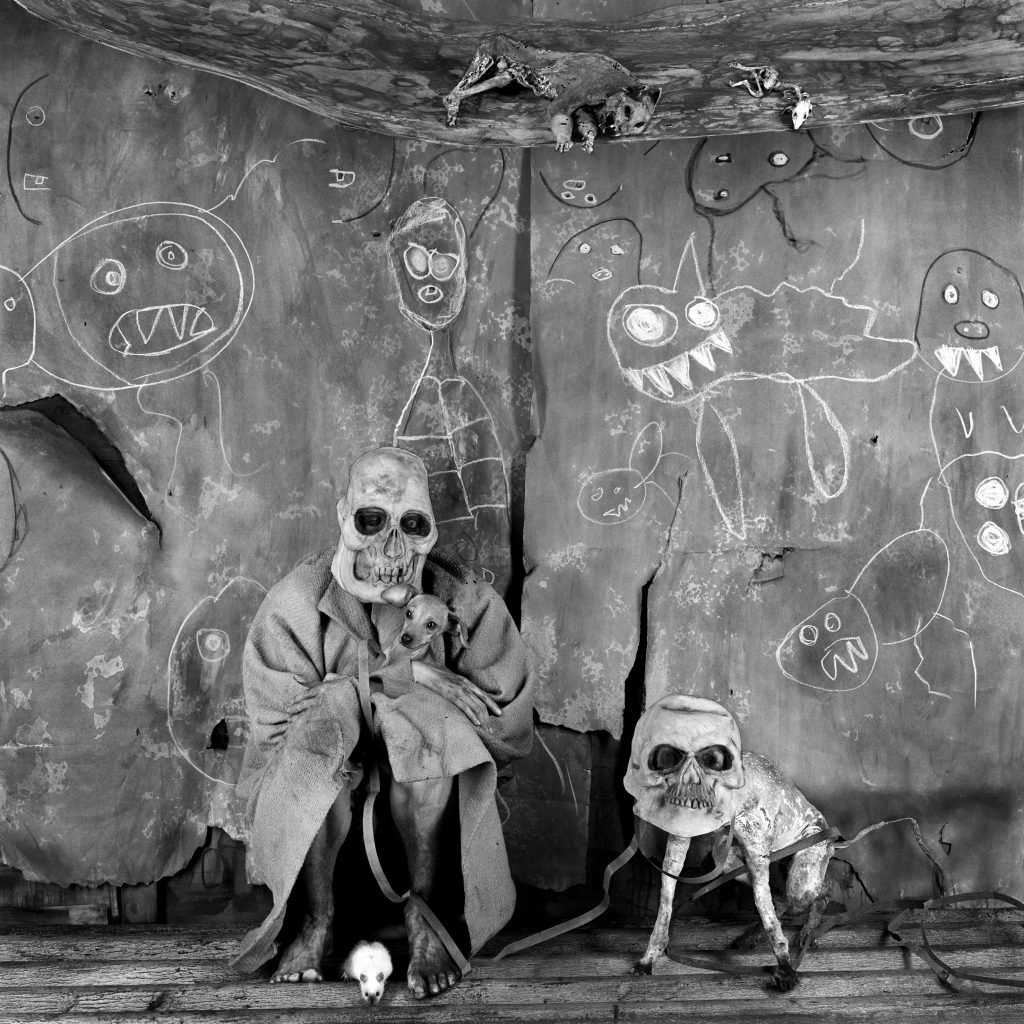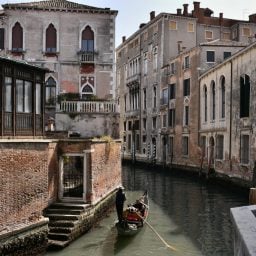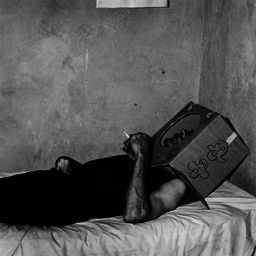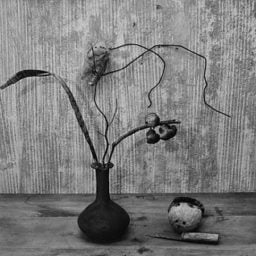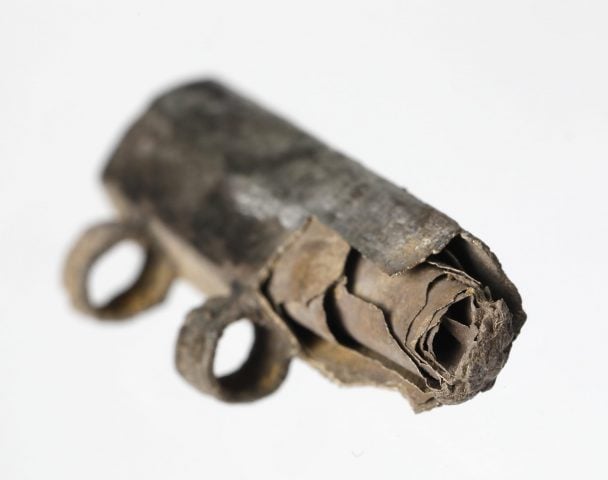If you aren’t familiar with Roger Ballen’s photographs, google them now. Quickly, you’ll find yourself immersed in the artist’s singular world—a realm where rats roam and monsters mingle with men and everything is covered in grime. A frisson of excitement comes with the unease of looking at Ballen’s work, if only because the photograph keeps us at a reassuringly safe remove from whatever nightmarish place is being depicted therein.
But what if that place was real?
It now is, in a sense. In Johannesburg, South Africa, Ballen has just opened a cultural space called the Inside Out Centre for the Arts. Stepping through the building’s winding concrete entrance feels a lot like stepping into one of his photographs.
The first things you’re likely to notice are the human and animal dolls installed in a series of strange tableaux throughout the space. They belong to “End of the Game,” the center’s inaugural show, which reflects on the devasting legacy of the “Golden Age” of African hunting in the colonial era, when Westerners like U.S. President Theodore Roosevelt and author Ernest Hemingway made pilgrimages to the continent in the name of exotic game.
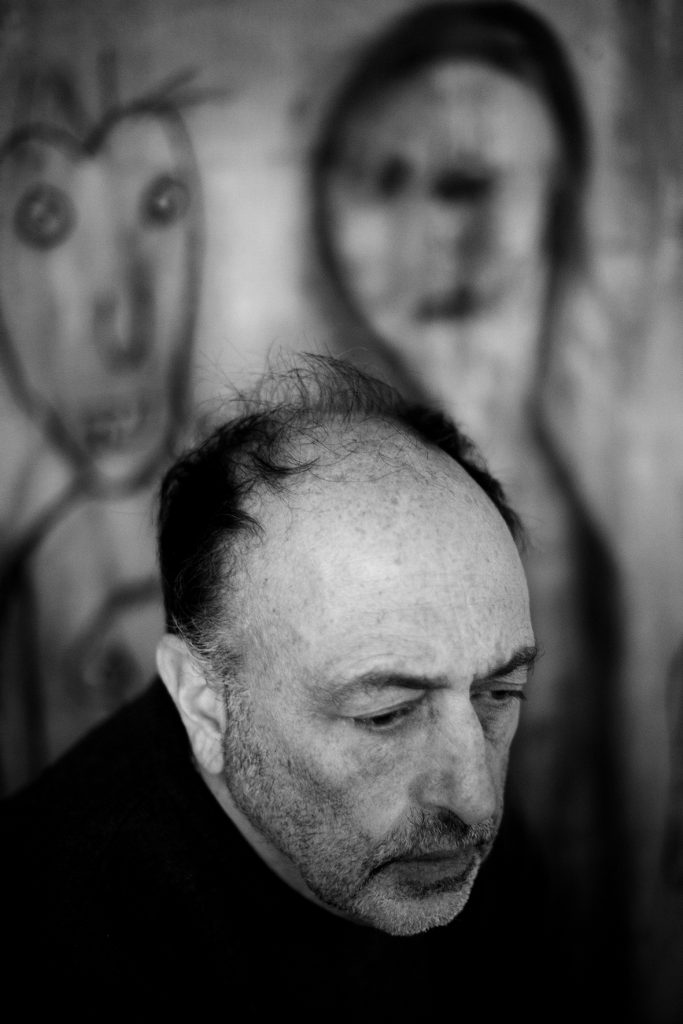
Roger Ballen Roger and the Inner Voices (2015). Courtesy of the artist and the Inside Out Centre for the Arts.
With a mix of archival material and Ballen’s own work, the show reflects his vision for the space as part museum, part educational facility, and part studio. The artist has even laid out a set of guiding criteria for what to show in the space—a list of soft rules that stipulates, among other provisions, that exhibited art should relate to what he calls the “Ballenesque.”
Like “Lynchian,” “Ballenesque,” conveys a particular aesthetic, mood, or psychological condition. It’s hard to describe but you know it when you see it.
“My approach towards art is that the work should enter the subconscious mind faster than you can blink,” Ballen told Artnet News in a recent video interview. “It doesn’t matter whether you have an open mind or a closed mind, it goes in there and has a transformative effect.”
The artist, now 72, was sitting before a cabinet of knickknacks that first seemed odd, then oddly appropriate. On the lower shelves were figurines of Mickey Mouse, Tintin, and various other fictional characters that were decidedly not “Ballenesque.” On the upper rungs, though, were flaccid rubber masks and a puppet that looked like a rabid rabbit with vampire’s teeth. These I would categorize as moderately “Ballenesque,” but really, it was the combination of the two—the cheap bric-a-brac sharing space with meticulously crafted objects of horror—that most captured the artist’s signature style.
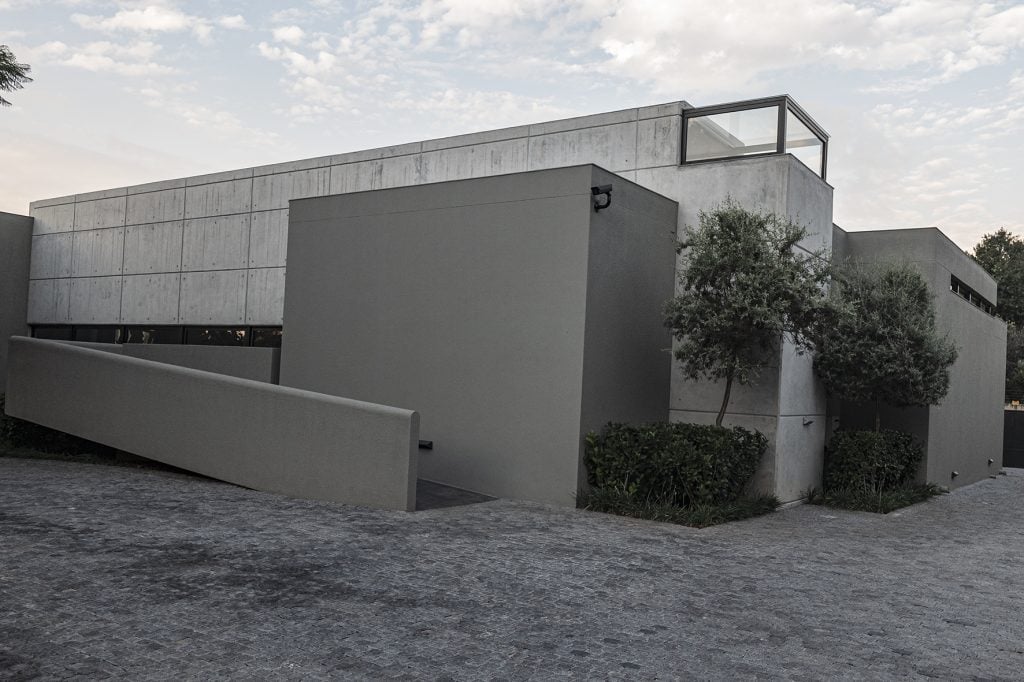
The Inside Out Centre for the Arts in Johannesburg, South Africa.
Ballen, who co-represented South Africa at last year’s Venice Biennale, has lived in Johannesburg for over 40 years now. The place has clearly had an indelible impact on him, even if that’s not necessarily clear when looking at his photos. The pictures don’t exist in a universe that looks anything like the one you and I know, after all; South Africa may be where they were shot, but the location might just as well have been Mars or Satan’s basement or the innominate, post-industrial setting of Lynch’s film Eraserhead.
Johannesburg, he said, “is an extreme society; don’t ever think it isn’t. It’s not an American suburb, I can tell you that.”
But when asked if the psychological resonances of his work relate to any aspects of his adopted hometown, Ballen insisted that his vision mostly just reflects the recesses of his own mind.
“I found my niche here, in a way—the people, the places—then built on it, layer by layer by layer,” the artist went on. “At the end of the day, it’s hard to know what’s documentary, what’s Roger Ballen’s imagination. What’s real and unreal?”
“All of these things are combined in the work, which is part of the ‘Ballenesque’ aesthetic,” he said. “You’re not sure what’s what.”
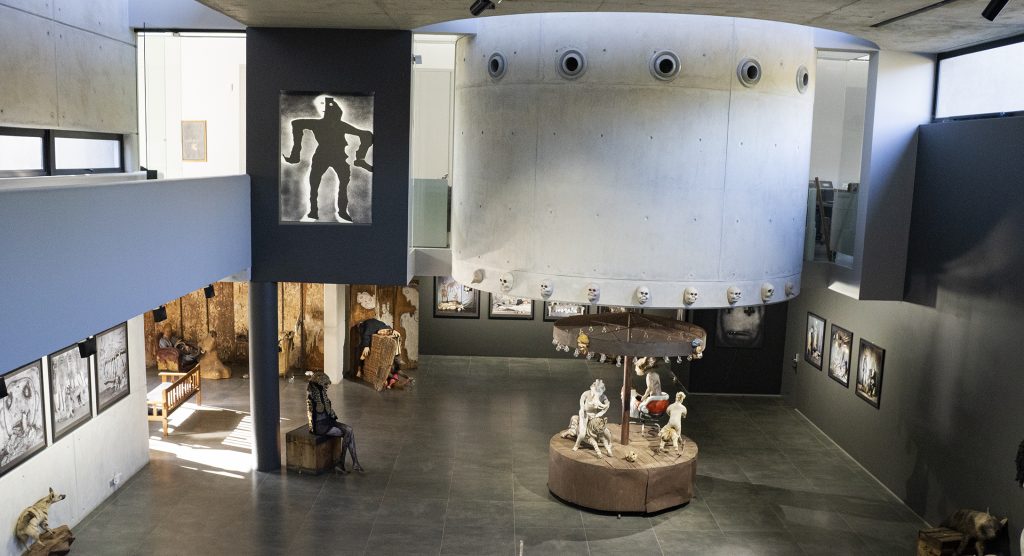
Installation view of “End of the Game,” 2023, at the Inside Out Centre for the Arts. Photo: Marguerite Rossouw.
Still, as much as Inside Out resembles Ballen, its mission goes beyond him. He envisions the non-profit space as a community hub, and he worked with its Johannesburg-based designer, Joe Van Rooyen, to create a structure that felt inviting to all.
“A lot of people who come here have never been to a museum in their life,” the artist said. (The building cost a “few million,” according to Ballen, and was funded through his own resources and a donation from a “private foundation,” which wished not to publicize its involvement.)
Education is a major priority for the center—special programs for high-schoolers are planned—and its focus is more local than global. Another one of the space’s guiding criteria is that displayed art “should directly or indirectly have a relationship to African culture, history, or contemporary issues of the continent.”
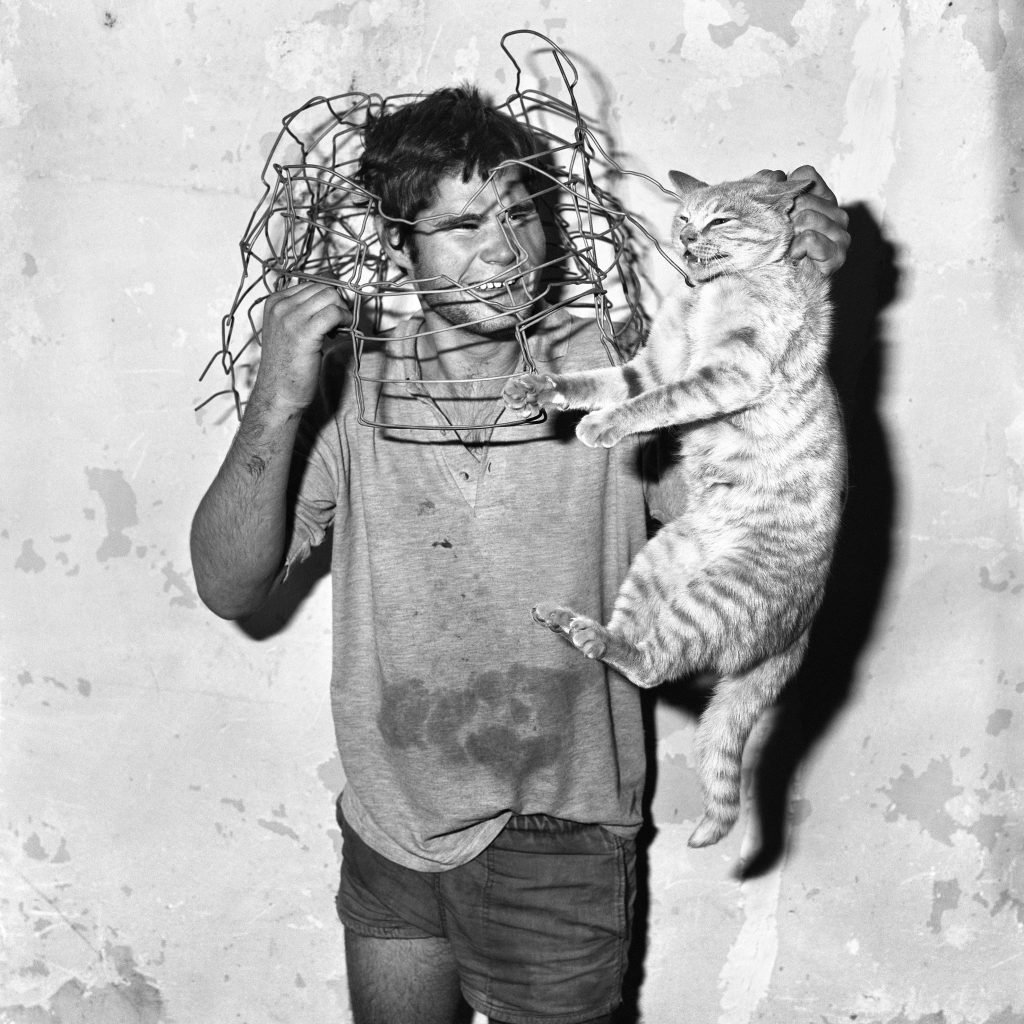
Roger Ballen Cat Catcher (1998). Courtesy of the artist and the Inside Out Centre for the Arts.
Ballen’s work won’t always be on display, though it’s hard to picture an exhibition checking both the “Ballenesque” and “relationship to Africa” boxes without his involvement. No future shows are currently planned, and when asked about this, the artist said he and the Inside Out staff are still figuring out what exactly they want to show.
“End of the Game” does not currently have a closing date, but when it does eventually conclude, at least one of its animals will stick around. His name is Roger the Rat, and he is both a man and a rat; an unofficial mascot for the center and an alter ego of Ballen. (The artist made a film about the character last year.)
According to the artist, the human-sized creature recently broke into the center and has no plan to leave. “He is now a resident here,” Ballen said.
